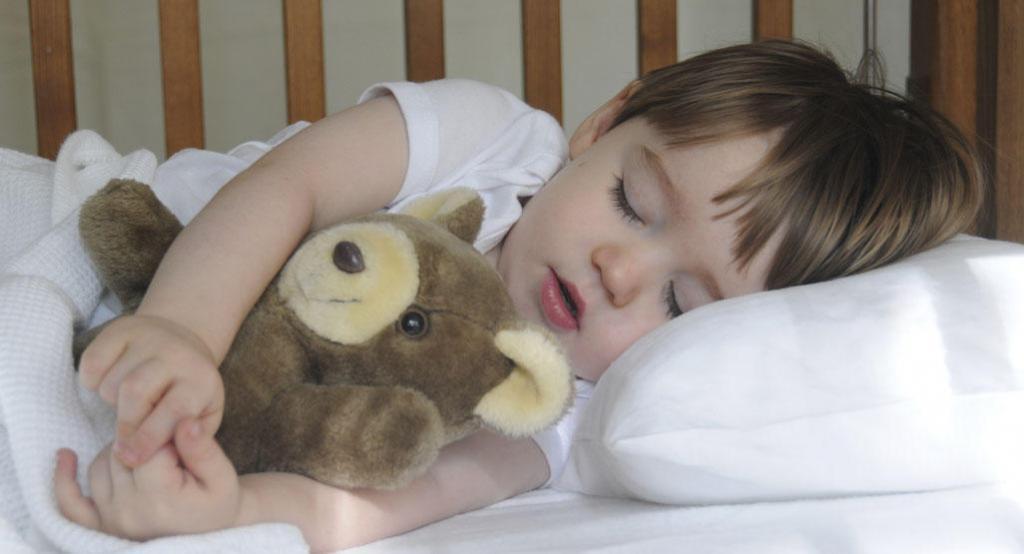There has been a lot of interest lately in finding out the secret to keeping a toddler or youngster in bed at night.
Toddlers often take a long time to fall asleep, and either their parents or caregivers have to join them in bed or they’ll cry incessantly. It can take them up to two hours to fall asleep at times. Even a couple of hours later, they’re still awake, either needing to repeat their night routine or clambering into their parents’ beds.
A new sibling may have triggered these parents’ sleep issues, or they may have begun co-sleeping with their child as a newborn and transferred him into a big kid bed.
Because their child isn’t sleeping well, they all have one thing in common: they’re ready for a new solution.

If this describes your situation, I can only imagine how worn out you are. When you’re unable to get a good night’s sleep because your evenings are so erratic or because your child is a master at stalling tactics, you’re not receiving the rest you need to function at your best. If nothing else, you’ve tried a lot of different things.
However, this is not the only option. Changing your child’s sleep can be done!
So What’s the Secret?
I’m sorry to have to break it to you, but… There is no one-size-fits-all solution when it comes to working with young children. It is sad that anyone who encouraged you to give them melatonin, or try a weighted blanket, or move them into a toddler or adult bed is deceitful. When the novelty wears off, you’ll be right back where you started: these items are like band-aids that only work for a limited amount of time.
In order to modify any behavior, toddlers require a number of factors, and yes, this includes changing their sleep habits as well. It’s important to be consistent, set clear boundaries, and respond quickly if they fall short of your standards.
If you’d want to learn more about what I’m talking about, please keep reading.
#1: Firm Boundaries
It’s easier for your youngster if you can communicate your expectations in a straightforward and consistent manner.
Consistent bedtimes and routines, for example, can make a tremendous difference. With these cues, your child will know that it is time to go to bed, making arguments or stalling difficult.
However, for a toddler, it’s difficult to understand why it’s acceptable for them to sleep in your bed while it’s not acceptable for them to sleep in their own. There are times when you want to watch Netflix or have a glass of wine downstairs, but there are nights when you want your toddler to fall asleep in your arms. If you want your child to sleep in their own bed, having a constant sleeping location is critical.
#2: Avoid Giving Attention to Non-Ideal Behaviors
You get more of what you focus on.
You can encourage your child to continue using the bathroom by praising him or her for excellent behavior, such as peeing on the potty.
When you want your toddler to avoid repeating habits like waking up and crawling into bed with you in the middle of the night, the same holds true. In spite of your outbursts, you are supporting your child’s bad conduct since you are drawing attention to it. Even if the attention is unfavorable, it can still be beneficial to a young child. If this happens, the best course of action is to calmly and firmly place your child back to sleep.
Allowing an early riser to start the day at 5 a.m. merely promotes the bad habit. The Hatch Rest—no, that’s not a reference to an affiliate program —is what we use at our house to wake us up. When it’s time for your youngster to get out of bed, your clock can flash green or display a digital number like 7:00. Until that time, it’s crucial to teach your toddler to treat it like evening, and to quietly lay in bed and try to sleep. It’s then that you go in and wake them up for the day when it’s time to do so.
#3: Consequences
Even if you’re doing both of the aforementioned things, your child’s sleep isn’t improving. As a result, this one may be the most crucial.
Consequences for actions that aren’t ideal are a good method to establish limits with your toddler and communicate your expectations.
Don’t get all riled up on me, because I’m not talking about physical punishment here. As for toddlers, I feel that they should be given one warning and the opportunity to make the proper choice before they are punished.
Nonetheless, if your child is doing the same thing again and it’s disrupting their sleep and yours, it may be time to implement a punishment.

The term “consequence” encompasses a wide range of unpleasant experiences for your kid. A general strategy won’t work here because every child is different, and you are the one who knows your child best. Select an issue that is important to them while balancing it with avoiding items that would frighten or irritate them.
Expect your child to be disturbed for a brief period of time as a result of this action, and there may be tears involved. A few days into a daily practice, you’ll begin to notice a noticeable difference in your health
The Less Than Two Minutes Version: Getting Your Toddler To Sleep In Their Bed
- Assist youngsters in learning self-calming techniques so that they do not have to rely on their parents to help them sleep at night.
- Make it easier for parents and children to obtain a good night’s rest.
- Fewer doctors and psychologists have noticed this, but if your partner and children are preventing you from sleeping, it may be time to reevaluate your sleeping arrangements. You don’t need to modify anything if it’s working for everyone.
- Tell your kid why — at this stage, having an explanation can help! (And saying you need more sleep or that they need to learn to sleep without you are both good reasons.)
- Have an explanation ready for your child if they ask why you are doing something. (Also, mentioning that you need more sleep or that they need to learn to sleep without you are both valid explanations.))
- As they go off to sleep, try not to pay attention to them. Make your exit as soon as they’ve fallen asleep.
- Make waking up in the middle of the night as uninteresting as possible. Put them back to sleep as calmly as possible.
- Over the next few evenings, try putting them to bed in the hallway or someplace else other than their room.
- Several psychologists claimed parents may modify this behavior, even if it has been going on for a while. However, it may take several weeks or longer for certain children.
The Longer Version: This Is Normal + Variations on “Fading”
This is normal. In addition, a number of sources claim that it’s an important part of teaching your child how to cope with stress.
Your toddler’s desire to “exercise their newfound freedom and prolong their daily pleasure” is perfectly normal, according to the Zero to Three Foundation. There are several reasons why a child may wake up in the middle of the night, and one of the most prevalent is that they are looking for familiarity in their new bed configuration (i.e. a new view or linens and blankets).
For both the child and the parent, it’s a learning curve to create new nighttime routines, as is the case with so many other aspects of parenthood. These experts advise showing your child that you are aware of how difficult this transition will be for him or her while also sticking to the rule of sleeping in your own bed.
American Academy of Pediatrics (AAP) agrees with this, stating that “most children are glad to ‘graduate’ and stay in their beds” after the move to a bed. The transition can be a bit more difficult for certain people, and the best approach to continue is by following the regular night ritual and using the “fading” method (described more below.)
Anxiety expert Jamie Howard says that letting your children sleep in your bed can “inadvertently reaffirm [their] perception that it’s unsafe to be alone,” which is why it’s best to keep them out of your room. He goes on to say that many well-meaning parents unintentionally foster fear in their children by offering them words of confidence, but that it’s never too late to begin teaching your child these skills anyhow!
But Others Say There Is No “Right Way” For Toddlers to Sleep
There were two sources we found that emphasized that there is no “right way” for toddler sleeping. Steven Dickstein, a pediatrician at the Child Mind Institute, wrote that “having a child come into your bed to sleep isn’t, in itself, problematic, but it can certainly be stressful if it’s interfering with sleep (his or yours) or creating conflict in the family.” The only thing that matters when it comes to getting your child to sleep is that everyone in the family gets enough sleep, he said.
Fading: How to Get Your Kid Out of Your Bed
According to our research, there is no “correct method” to put down a sleeping toddler. “Having a child come into your bed to sleep isn’t, in itself, bad, but it can certainly be stressful if it’s interfering with sleep (his or yours) or causing tension in the family.” No one “correct” approach to put your child to sleep, but “everyone in the family” must receive enough rest, he said.
When it comes to chronic co-sleepers, psychologist Lynelle Schneeberg splits the process into four steps:
- Your child will learn that it is usual and safe to wake up in their own room by putting a temporary bed or sleeping bag in their room (or perhaps staying there yourself) in the morning.
- After a period of time, relocate to a chair and then to your own room while they fall asleep. Go back to the beginning of the process if you find yourself waking up frequently at night.
- Take them back to their room and tuck them in, but keep it as boring as possible. Please don’t provide your youngster with any stories, food, or other means of learning that this is a time when something fun can happen.
- To keep your child from coming into your room after you’ve done all of the above, make them a “nest,” i.e. a separate area in your bedroom where they can sleep during the night that isn’t your bed. She recommends enforcing a rule that they enter the room discreetly and not disturb you.
When your child is able to fall asleep on their own, it will be much easier to get them to sleep through the night in their own room without your constant presence.
It is recommended by the American Academy of Pediatrics to calmly and quietly walk your child back to their bed if they wake up and come find you. It’s also important to remember that you’ll have to repeat these actions multiple times throughout the first night of the new bed transition, and that as many as 20 “farewell appearances” in one night isn’t unusual. They also advise against implying that getting out of bed is a reward (and that includes negative attention.)
Steven Dickstein at the Child Mind Institute explains his typical recommendations this way:
- Steven Dickstein at the Child Mind Institute explains his typical recommendations this way:
- The Child Mind Institute’s Steven Dickstein offers the following explanation of his standard recommendations:
- For example, you may move from their bed to a chair in the room to down the hall each night.
Jamie Howard, a psychologist at the Child Mind Institute, advises the procedure below for fading. She says that in the most difficult circumstances, it can take months of work:
- If your child is old enough to articulate why they are coming to you at night, ask them. It can shed light on the specific source of their anxiety and help them sleep better at night. There is no need to make your child feel bad about their anxieties, she explains.
- Ask your child if they can explain why they come to you at night if they are old enough to do so. It can shed light on the precise source of their nocturnal anxiety. There is no need to make your child feel bad about their anxieties, she explains.
- Keep an eye on your child at all times and gently lead them back to their room if they get into your bed with you.
- Because “allowing [them] backtrack significantly damages the progress [they are] making,” having your child sleep in their own bed needs to be routinely enforced.
It’s So Worth It
However challenging it may be in the near term, making some adjustments to your existing routine in the long run will be well worth the effort.

Consider how much better your child will sleep at night knowing that they are in their own bed, and how much more time you will have to yourself, perhaps with a glass of wine or a date with your partner.
Then imagine them sleeping soundly in their own bed all night, while you get to stretch out in yours and have a rejuvenating night’s sleep.
In the early stages of any sleep program, it is well worth the effort to see effects from sleep training.
With that, I’d want to wish you well and thank you for reading this post. If you have any concerns or questions about the advice provided above, or if you think your family could benefit from a clear, step-by-step action plan based on tried-and-true sleep practices, please don’t hesitate to get in touch.
FAQs
What age should you start to train them?
If you and your child are on the same page, then there is no right or wrong answer. It is recommended that parents keep their babies nearby during the first year (or at least the first six months) of their child’s life, but no rules are provided by the American Academy of Pediatrics regarding when a toddler should be allowed to sleep in his or her own bed (or room). One study found that if you wait until a child is three before transitioning from a crib to a toddler bed, you’ll have a better chance of success. It’s also a time when many kids begin to understand the concept of boundaries and are able to sleep on their own. It’s never too early to begin developing healthy bedtime habits with your child, so don’t worry about the ideal age.
How can I get them to sleep in their room at night?
Having a nighttime routine that your child helps plan is one of the most effective ways to begin using right away. Allowing children to choose their own bedtime stories or clothing is one way to do this. As a last step, make sure your child is comfortable in their own bed. A nightlight, an open door, and reassuring them that there is no monster under the bed may be necessary (even if you have to get on your hands and knees and check). Stay firm in your decision to keep your toddler in their own bed even if your child makes a fuss or tries to enter your bedroom. Don’t let your emotions get the better of you when you return them to their room. Remember that even if you don’t feel like it, you’re in charge.
What are the negative effects of older children sleeping with parents?
If you have a three, four, or even five-year-old, you may be justified in allowing them to sleep in your marital bed. They claim that the child will eventually grow out of the habit. Nevertheless, a startling number of children between the ages of 8 and 12 are still sleeping with their parents. This can put a burden on a marriage, but it can also have a negative impact on the child. It may make it difficult for children to lead a “normal” life, such as going to sleepovers or field excursions with their peers. Co-sleeping with a parent, especially if there are two of you, can lead to sleep deprivation, which can be especially dangerous for older children.
What to do if the child is afraid and refuses to sleep alone?
Fears that seem irrational or absurd to you may be quite real to your child and should not be discounted. If your youngster is terrified of monsters, you may join in the fun by making potions, charms, and barricades to keep them at bay. Even inviting the monsters out of the room isn’t enough for some parents, while others choose to teach their children that monsters aren’t real and inspect their closets to back up this claim. The use of a bedside nightlight or even just keeping the door slightly ajar can generally soothe apprehensive children. Getting to the bottom of what’s bothering your child and coming up with a solution that helps them feel protected can go a long way.
Vote for this post!

![Top Rated CPAP Machine Buyer’s Guide [current_date format=’m/Y’]](https://bestpillowsleepers.com/wp-content/uploads/2023/03/best-cpap-machine-img_6405d72310053-400x300.jpg)
![The 11 Best Cooling Weighted Blankets [current_date format=’m/Y’]](https://bestpillowsleepers.com/wp-content/uploads/2023/01/best-cooling-weighted-blankets-img_63d4ff15c615d-400x300.jpg)
![Ultimate Guide to Choosing a Best Cooling Mattress Pads [current_date format=’m/Y’]](https://bestpillowsleepers.com/wp-content/uploads/2023/01/best-cooling-mattress-pads-img_63c403115126b-400x300.jpg)
![Ultimate Guide to Choosing a Best Cooling Mattress [current_date format=’m/Y’]](https://bestpillowsleepers.com/wp-content/uploads/2023/01/ultimate-guide-to-choosing-a-best-cooling-mattress-img_63bcdba870d77-400x300.jpg)
![Ultimate Guide to Choosing a Best Cooling Comforters [current_date format=’m/Y’]](https://bestpillowsleepers.com/wp-content/uploads/2023/01/ultimate-guide-to-choosing-a-best-cooling-comforters-img_63bba2f5cd3ce-400x300.jpg)